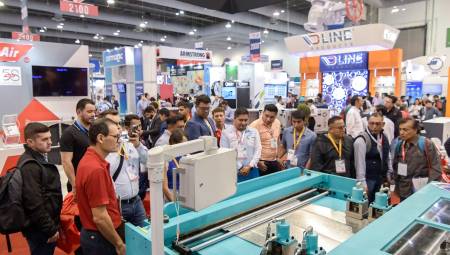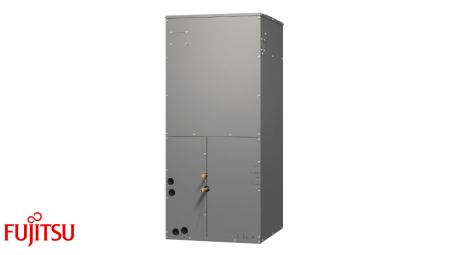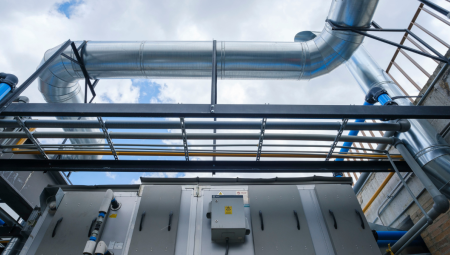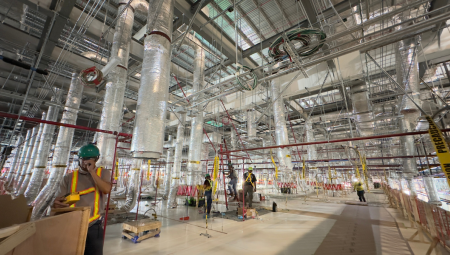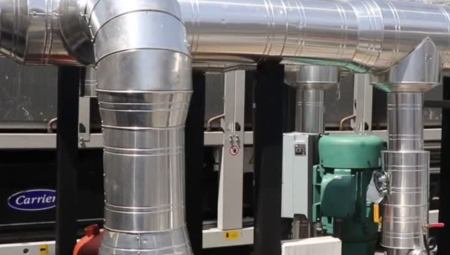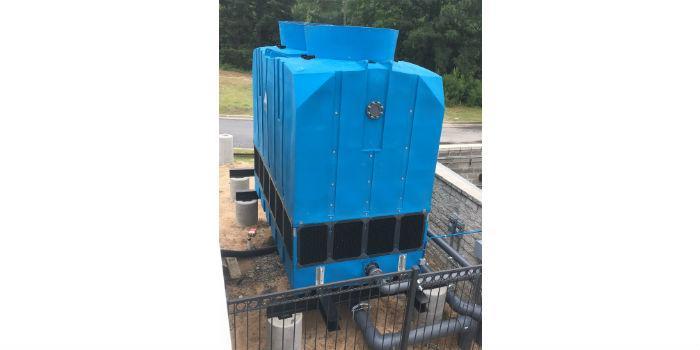 This antimicrobial option reduces the risk of Legionnaires' disease in cooling tower or chiller applications.
This antimicrobial option reduces the risk of Legionnaires' disease in cooling tower or chiller applications.
by Delta Cooling Towers
A new study from the Centers for Disease Control and Prevention (CDC) employing 196 cooling towers across the country found that 84 percent contained legionella DNA, indicating that the dangerous bacteria that cause a type of severe pneumonia, that can even be deadly, they were present or had been at some point. This means that the real question is not "if there will be another outbreak," but "where and when" it will occur.
"During the period 2000-2014, passive surveillance of legionellosis in the United States showed a 286% increase in reported cases per 100,000 population," according to the CDC website.
The CDC also estimates that about 5,000 cases of Legionnaires' disease are currently reported each year in the United States. Therefore, keeping legionella out of building water supply systems, within which cooling towers constitute a known risk, is critical to preventing infection.
In response to this issue, HVAC unit contractors are combining high-performance plastic chillers and cooling towers with new antimicrobial options that significantly reduce the risk of infection.
Control of pathogen growth
Throughout the United States, as well as in most of the world, the mainstay of large refrigeration systems remains the traditional combination of chillers, air conditioners and cooling towers. Cooling towers have a long history of effectiveness in expelling heat from the water used in many commercial and industrial applications where chillers are employed.
However, it is well known that, under typical operating conditions, cooling towers can spread legionella. The design of many towers creates pockets where water can stagnate, a condition that can lead to the development of microorganisms.
This recently led the American National Standards Institute (ANSI) and the American Society for Air Conditioning, Refrigeration and Heating (ASHRAE) to publish their standard 188, called "Legionellosis: Risk Management in the Construction of Water Systems," a document in which they set out the new standards and requirements to be taken into account in the design of new buildings and in renovations of existing structures in order to mitigate the risks of contamination.
"Everyone responsible for HVAC facilities or process cooling systems should be aware of Legionnaires' disease and be able to address any concerns that arise in this regard," said Rick Hill, facilities director at Arkansas Surgical Hospital, a medically owned hospital specializing in joint and spine surgery in central Arkansas. "Good procedures must be implemented to prevent or control the disease."
When it came time to replace an air-cooled chiller at Arkansas Surgical Hospital, Steve Keen, president of Powers of Arkansas, the HVAC contractor responsible for the hospital project, recommended and installed a water-cooled chiller, along with an advanced cooling tower with microbial properties.
"Legionella is always a concern when using HVAC systems that use a cooling tower and anywhere there is water exposed to the atmosphere," Keen warns. "The antimicrobial properties of Delta cooling towers help prevent that kind of growth and exposure of patients and staff."
Delta Cooling Towers recently launched a line of towers built with antimicrobial resin, which is fully integrated into the structural material and housing of the cooling tower. The tower filler and dew remover are also made of antimicrobial PVC.
The antimicrobial resin contains broad-spectrum additives that operate at the cellular level to continuously disrupt and prevent the uncontrolled growth of microorganisms and biofilms within the tower. Efficacy tests were conducted by the Special Pathogens Laboratory, The Legionella Experts.
The design and materials of the tower can be very important in preventing the growth of pathogens. To avoid stagnant water problems that cause pathogen growth, experts recommend that cooling tower designs have a collection tray and/or a sloping tray sweeping pipe system.
While some tower manufacturers currently market a tower with an antimicrobial filler (the medium through which hot water is distributed while cooling), a better option is to have a tower whose filler, structural housing, and sink are made of antimicrobial material.
"We decided that since we were replacing the air-cooled chiller with a water-cooled one, we wanted a cooling tower that was in harmony with our philosophy of protecting patient safety," says Hill, who advocated for antimicrobial technology and found support for it among hospital managers. "We want to maintain one of the lowest infection rates among hospitals in the country."
Arkansas Surgical Hospital already has a very low infection rate, less than 0.3%, compared to a national average of 3% among U.S. hospitals.
Energy savings and long service life
By proactively making the switch to an advanced antimicrobial tower cooler, along with a very high-efficiency HVAC cooler, the hospital is also significantly reducing energy costs, something that was also a primary concern.
"Our previous, air-cooled HVAC system required a lot of electricity," Hill adds. "With the water-based cooling tower and efficient chiller we expect to save tens of thousands of dollars annually in energy expenses."
The durability and long service life of the cooling tower were additional matters that Hill took into account.
Metal-coated cooling towers are vulnerable to corrosion by salt air, industrial gases and even chemicals used to treat recirculating water. The best water treatments for legionella prevention, in fact, are oxidizing biocides that react aggressively to metal surfaces, attacking metal-lined cooling towers and shortening their service life.
Consequently, metal cooling towers require more patching, more maintenance, more downtime, and eventually their replacement.
Hill says he thought about acquiring a metal cooling tower, but eventually decided that its maintenance would be very difficult.
"Maintaining a metal cooling tower requires more work than we thought was desirable and the units have a shorter life cycle because the metal rusts and requires repair and repair," Hill explains.
By choosing Delta's cooling tower, whose filler, dew remover and casing made of corrosion-resistant antimicrobial plastic, Arkansas Surgical Hospital now has a cooling tower immune to the corrosive effects of ambient air and water treatment chemicals as well as oxidizing biocides; all of which deteriorate the cooling towers with metal coating.
In addition, since molded plastic cooling towers are one-piece, there are no problems with premature natural wear of joints, welds, and patches. Therefore, plastic models have a longer service life and their cleaning, repair or replacement implies much less downtime.








